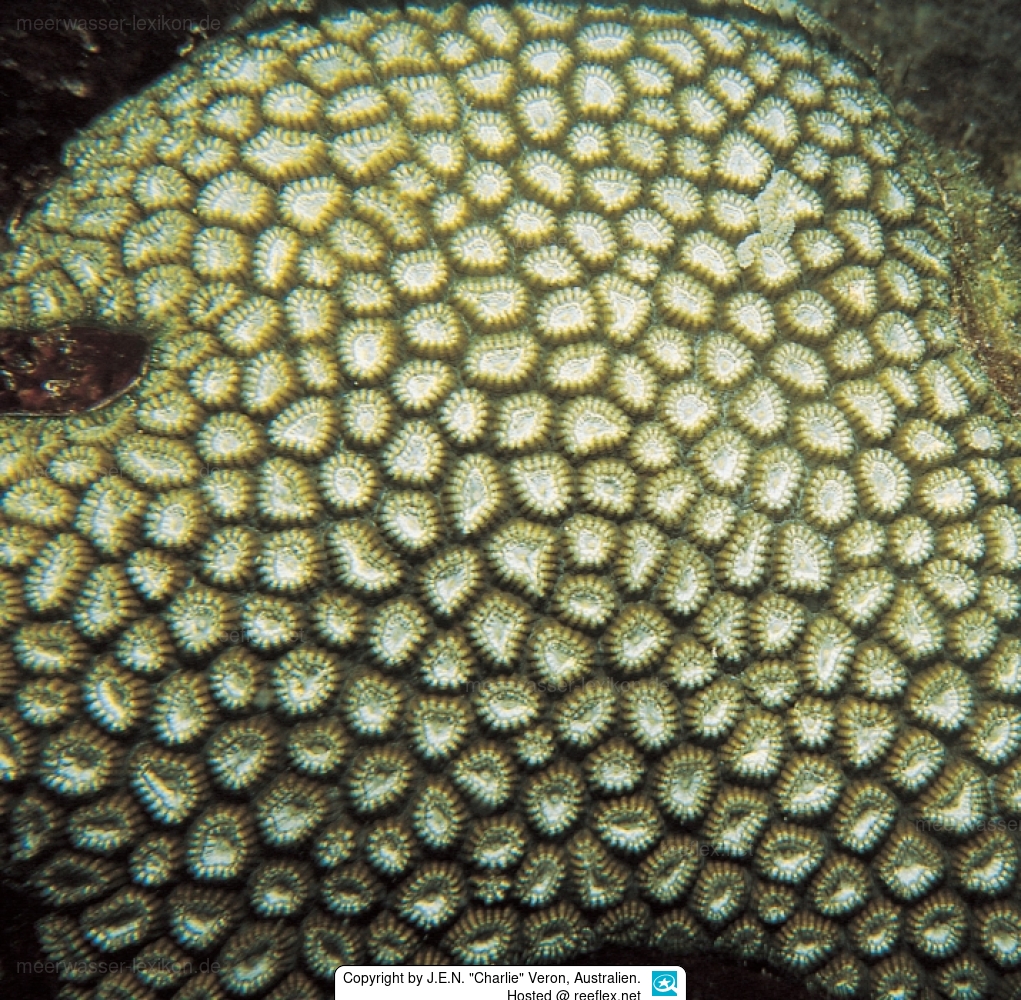Info
Characters: Colonies are massive, flattened rather than hemispherical and commonly over one metre across. Corallites are compact, neatly rounded and uniform in size. Septo-costae are exsert and are equal and uniformly spaced.
Colour: Uniform dark grey with pale grey oral discs.
Habitat: Shallow reef environments.
Abundance: Generally uncommon.
Similar species: Favia favus , Favia marshae
Source reference: Veron (2000). Taxonomic references: Laborel (1969), Amaral (1992). Additional identification guide: Hetzel and Castro (1994).
Synonymised names:
Heliastraea aperta Verrill, 1868 (synonym)
Montastraea aperta (Verrill, 1868) (synonym, previous combination)
Orbicella aperta (Verrill, 1868) (synonymy)







 Dr. John Edward Norwood "Charlie" Veron, Australien, Australien
Dr. John Edward Norwood "Charlie" Veron, Australien, Australien













